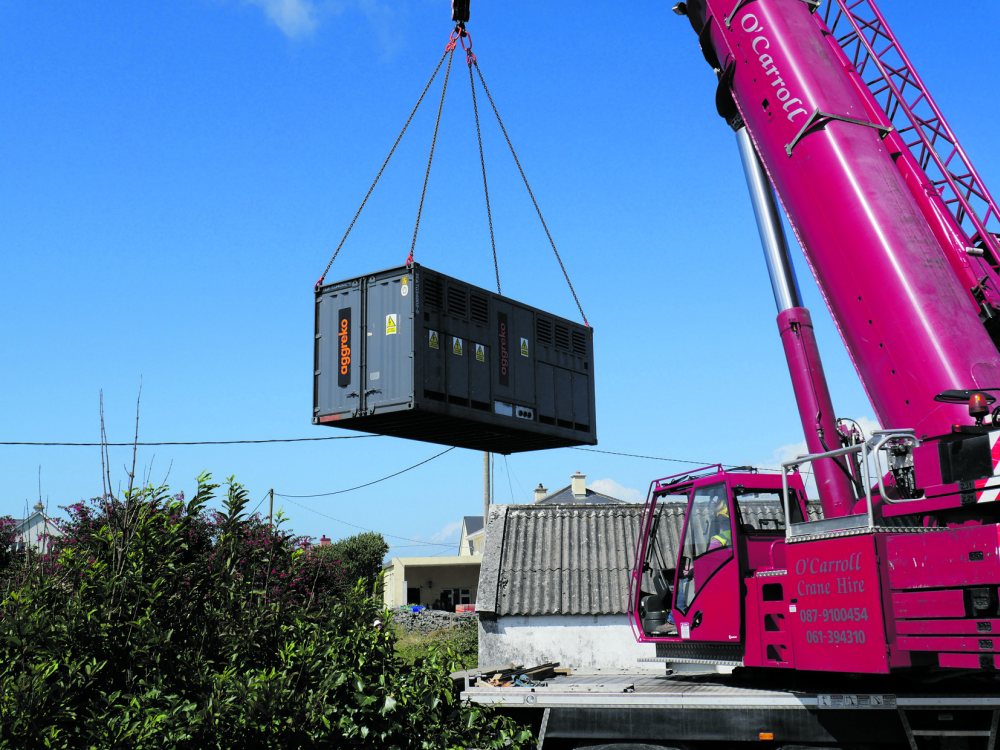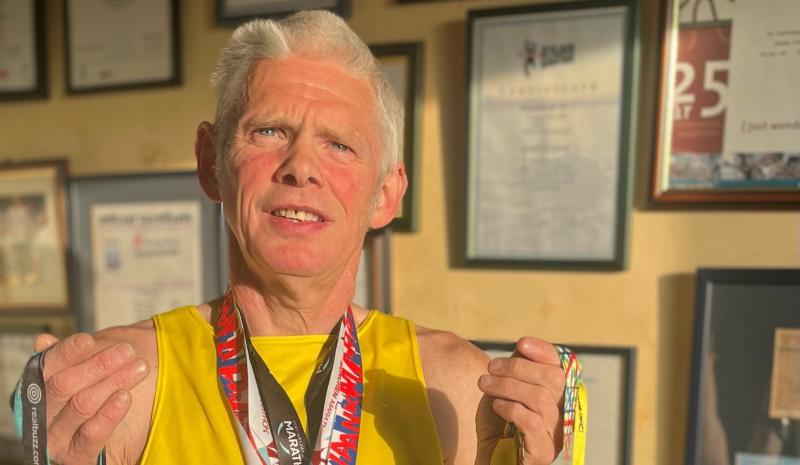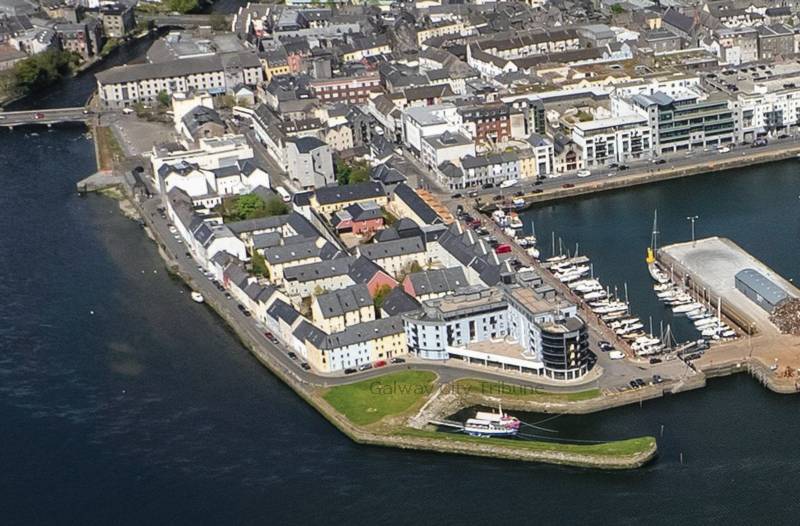News
Conspiracy theories over Aran Islands power cut

As soon as electrical power was restored to the Aran Islands on Monday night, attention turned to the conspiracy theories as to what triggered the four-days outage.
Inis Mór is connected to the mainland via an underwater electrical cable to Ros a’ Mhíl, and the sub-sea cable, linking Inis Mór with the smaller two islands was damaged at about 4.40am last Friday.
Power on all three islands was lost initially but Inis Mór returned to normal some hours later. The other two islands were without power until Monday night when generator power was connected.
The ESB Networks has yet to publicly confirm the cause of the damage to the cable, which it said suffered a “fault”.
A spokesperson said it was likely the cable was “struck under water”.
However, that has not stopped locals speculating about the cause of the damage to the underwater cable, about two kilometres off Inis Mór.
“There are all sorts of conspiracy theories going around,” said Sinn Féin Senator Trevor Ó Clochartaigh.
“Some people have said in the past that nets and fishing equipment has been damaged underwater, and that whatever caused that damage could be responsible for this. There is a theory that there are submarines, maybe the US or British or possibly even Russian submarines, are out there and that one of them struck the cable. Are they patrolling the Atlantic?
“People are wondering: How does a sub-sea cable, that is fairly sturdy, and is lying on the sea floor, get damaged to such an extent? Your guess is as good as mine but the ESB aren’t saying. It could be that it is old. It is 20 years or so old but still it was hit by something,” said Senator Ó Clochartaigh.
Power was restored to 372 customers on Inis Meáin and Inis Oírr at approximately 9pm Monday.
A specialised transformer arrived from England and ESB Networks crews worked to connect the two generators to the island electricity system. Poor weather on Sunday hampered efforts to restore power.
A detailed investigation of the cable damage and the seabed conditions is being carried out by ESB Networks and ESB International. They will then make a judgement on how best to repair the damage. It will take between two and four weeks to repair, the ESB said.
“ESB Networks apologises to customers on Inis Oírr and Inis Meáin impacted by this outage. We also wish to acknowledge our appreciation for the understanding afforded to ESB Networks crews by islanders while on Inis Oírr putting the generators and transformer in place,” the company said in a statement.
The power fault had many knock-on effects for the two islands, at the height of the tourist season. As well as visitors, there were hundreds of Irish college students staying there over the weekend.
The power cut impacted on mobile phone coverage and internet. “Many people had to throw food out of their freezer and the local doctor had to store antibiotics and supplies in the local pub,” said Senator Ó Clochartaigh, who contacted An Taoiseach’s office Friday to expedite the works.
Islanders are looking for a ‘plan B’ and assurances from the ESB so that future faults can be avoided.
“It’s not quite clear what plan B is but it could be an auxiliary line, running alongside the sub-sea cable, or a generator could be installed on eth islands on a permanent basis,” he added.
Irish Water confirmed its plant was impacted but once a generator was delivered on Saturday, normal treatment operations resumed.
Restrictions were put in place at night.
“Irish Water and Galway County Council would like to thank the ferry operator for ensuring the speedy and safe delivery of the generator to Inis Meáin. We would also like to thank Coffey Water Ltd for their assistance and the local businesses and general public who continue to conserve water during this difficult time. We would like to apologise for any inconvenience caused and would like to thank the public in advance for their co-operation,” the public utility said in a statement.
Connacht Tribune
West has lower cancer survival rates than rest

Significant state investment is required to address ‘shocking’ inequalities that leave cancer patients in the West at greater risk of succumbing to the disease.
A meeting of Regional Health Forum West heard that survival rates for breast, lung and colorectal cancers than the national average, and with the most deprived quintile of the population, the West’s residents faced poorer outcomes from a cancer diagnosis.
For breast cancer patients, the five-year survival rate was 80% in the West versus 85% nationally; for lung cancer patients it was 16.7% in the west against a 19.5% national survival rate; and in the West’s colorectal cancer patients, there was a 62.6% survival rate where the national average was 63.1%.
These startling statistics were provided in answer to a question from Ballinasloe-based Cllr Evelyn Parsons (Ind) who said it was yet another reminder that cancer treatment infrastructure in the West was in dire need of improvement.
“The situation is pretty stark. In the Western Regional Health Forum area, we have the highest incidence of deprivation and the highest health inequalities because of that – we have the highest incidences of cancer nationally because of that,” said Cllr Parsons, who is also a general practitioner.
In details provided by CEO of Saolta Health Care Group, which operates Galway’s hospitals, it was stated that a number of factors were impacting on patient outcomes.
Get the full story in this week’s Connacht Tribune, on sale in shops now, or you can download the digital edition from www.connachttribune.ie. You can also download our Connacht Tribune App from Apple’s App Store or get the Android Version from Google Play.
Connacht Tribune
Marathon Man plans to call a halt – but not before he hits 160 races

On the eve of completing his 150th marathon, an odyssey that has taken him across 53 countries, Loughrea’s Marathon Man has announced that he is planning to hang up his running shoes.
But not before Jarlath Fitzgerald completes another ten races, making it 160 marathons on the occasion of his 60th birthday.
“I want to draw the line in 2026. I turn 57 in October and when I reach 60 it’s the finishing line. The longer races are taking it out of me. I did 20 miles there two weeks ago and didn’t feel good. It’s getting harder,” he reveals.
“I’ve arthritis in both hips and there’s wear and tear in the knees.”
We speak as he is about to head out for a run before his shift in Supervalu Loughrea. Despite his physical complaints, he still clocks up 30 miles every second week and generally runs four days a week.
Jarlath receives injections to his left hip to keep the pain at bay while running on the road.
To give his joints a break, during the winter he runs cross country and often does a five-mile trek around Kylebrack Wood.
He is planning on running his 150th marathon in Cork on June 4, where a group of 20 made up of work colleagues, friends and running mates from Loughrea Athletics Club will join him.
Some are doing the 10k, others are doing the half marathon, but all will be there on the finishing line to cheer him on in the phenomenal achievement.
Get the full story in this week’s Connacht Tribune, on sale in shops now, or you can download the digital edition from www.connachttribune.ie. You can also download our Connacht Tribune App from Apple’s App Store or get the Android Version from Google Play.
CITY TRIBUNE
Galway ‘masterplan’ needed to tackle housing and transport crises

From the Galway City Tribune – An impassioned plea for a ‘masterplan’ that would guide Galway City into the future has been made in the Dáil. Galway West TD Catherine Connolly stated this week that there needed to be an all-inclusive approach with “vision and leadership” in order to build a sustainable city.
Deputy Connolly spoke at length at the crisis surrounding traffic and housing in Galway city and said that not all of the blame could be laid at the door of the local authority.
She said that her preference would be the provision of light rail as the main form of public transport, but that this would have to be driven by the government.
“I sat on the local council for 17 years and despaired at all of the solutions going down one road, metaphorically and literally. In 2005 we put Park & Ride into the development plan, but that has not been rolled out. A 2016 transport strategy was outdated at the time and still has not been updated.
“Due to the housing crisis in the city, a task force was set up in 2019. Not a single report or analysis has been published on the cause of the crisis,” added Deputy Connolly.
She then referred to a report from the Land Development Agency (LDA) that identified lands suitable for the provision of housing. But she said that two-thirds of these had significant problems and a large portion was in Merlin Park University Hospital which, she said, would never have housing built on it.
In response, Minister Simon Harris spoke of the continuing job investment in the city and also in higher education, which is his portfolio.
But turning his attention to traffic congestion, he accepted that there were “real issues” when it came to transport, mobility and accessibility around Galway.
“We share the view that we need a Park & Ride facility and I understand there are also Bus Connects plans.
“I also suggest that the City Council reflect on her comments. I am proud to be in a Government that is providing unparalleled levels of investment to local authorities and unparalleled opportunities for local authorities to draw down,” he said.
Then Minister Harris referred to the controversial Galway City Outer Ring Road which he said was “struck down by An Bord Pleanála”, despite a lot of energy having been put into that project.
However, Deputy Connolly picked up on this and pointed out that An Bord Pleanála did not say ‘No’ to the ring road.
“The High Court said ‘No’ to the ring road because An Bord Pleanála acknowledged it failed utterly to consider climate change and our climate change obligations.
“That tells us something about An Bord Pleanála and the management that submitted such a plan.”
In the end, Minister Harris agreed that there needed to be a masterplan for Galway City.
“I suggest it is for the local authority to come up with a vision and then work with the Government to try to fund and implement that.”












